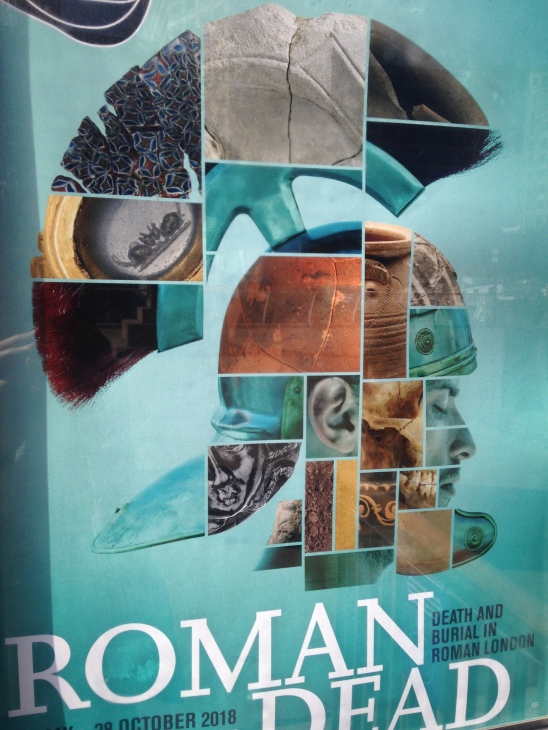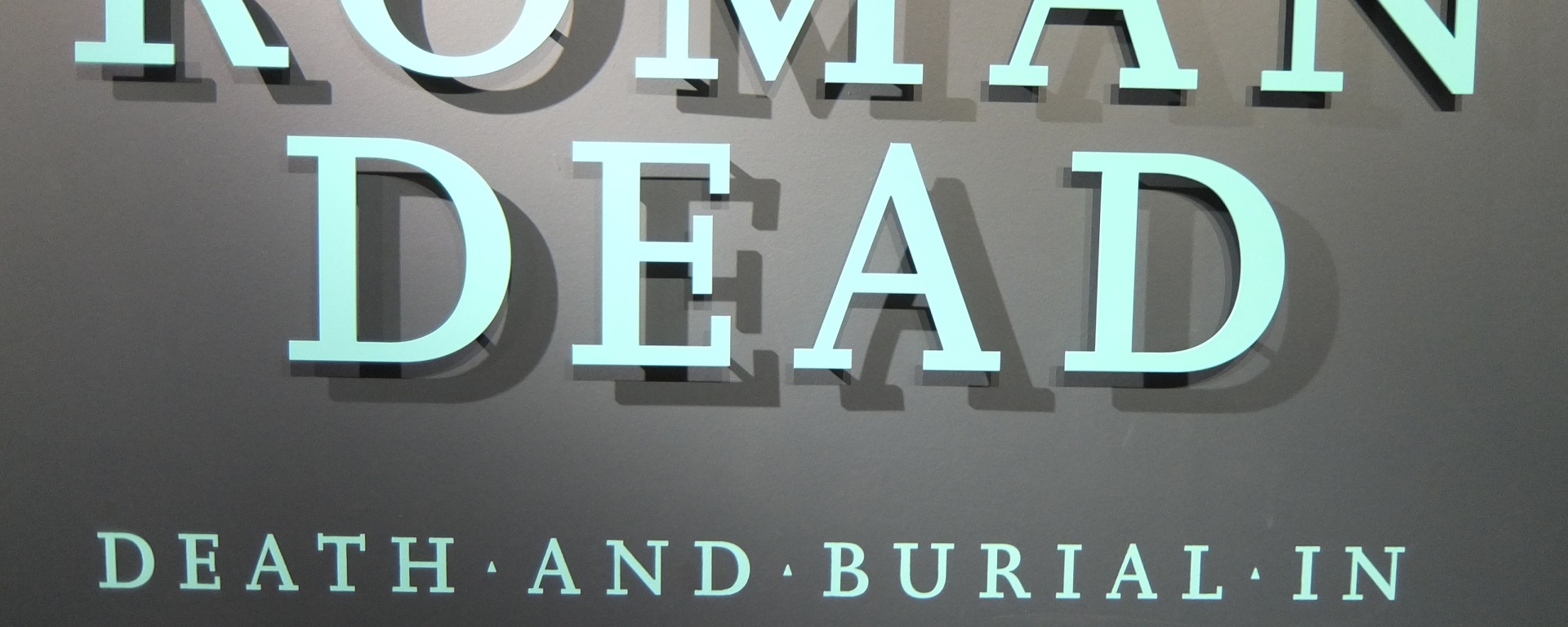Displaying human remains always flags up ethical debates, but this exhibition is really effective in presenting individuals, not specimens. It tells you as much about the people as can be inferred from the physical traces they left behind, both in the form of material culture and their physical remains.

One of the first text panels highlights how important human remains are from Roman London (Londinium). Over 400 years it is thought that between a quarter and a third of a million people lived and died in the area. Of this vast number there is burial evidence for around 2,000 of these individuals, which only amounts to just under 1% of the population. Although the sparse quantity of human remains left dating from Roman London means that it is hard to track subtle changed in funerary traditions over time, there is much to be learn from studying what has been left behind.
The first thing that I noticed when I enter the exhibition space is the quiet. Admittedly I had timed it to when it would not be too busy, but there is no sound scape in the gallery. Other than overflow talking from the AV clips regarding the Southwark sarcophagus the space seemed hushed, not in an unwelcoming manner, but in one of contemplation and respect as people engaged with the displays, pointing out highlights to each other and learning from the dead.

The whole exhibition is focused on the spectacular Southwark find of a 2.5 tone, stone Roman sarcophagus, the final resting place of a 35 year old woman. She is present alongside the coffin, with all the information regarding the discovery, excavation, conservation and research that went into gaining information about her.
Skeletons are fascinating and are instantly relatable to your own form, but this exhibition has taken into account that inhumation was not the only method that the Roman’s used in disposing of their dead. I think this exhibition has the largest display of cremated remains that I have ever seen. If skeletons have a shock factor at being so recognisably human, then cremations have the ability of showing how, without specific training, human bone and animal bone can look remarkably similar when burnt and broken down. Yes they are still the remains of people and are presented respectfully as such, but I would argue that it is harder as a visitor to have as much as an emotional response to remains that are not as clearly similar to their own body. This exhibition not only does a fantastic job of presenting cremations alongside related material culture, it also has clear diagrams that show what bones are actually present and if this gives any indication to number of individuals as well as age and sex.
Although I knew fabric could leave imprints on, for example, plaster, I didn’t realise that a human skeleton can leave an impression on wood, but an incredibly preserved coffin base shows just that, with labelling clearly presenting where to look for these marks.
The funerary goods in the exhibition are riveting. From beautifully carved jet, to the skeleton of a chicken and that of headless dog with a collar. But a highlight was the seeds presented in the exhibition, which are admittedly tiny and not incredibly attractive but they show off the presence of food offerings. Actual Roman meals. In my eyes that’s pretty special.
Roman Dead; Death and Burial in Roman London is on from the 25 May – 28 October at the Museum of London Docklands and it is free entry.





